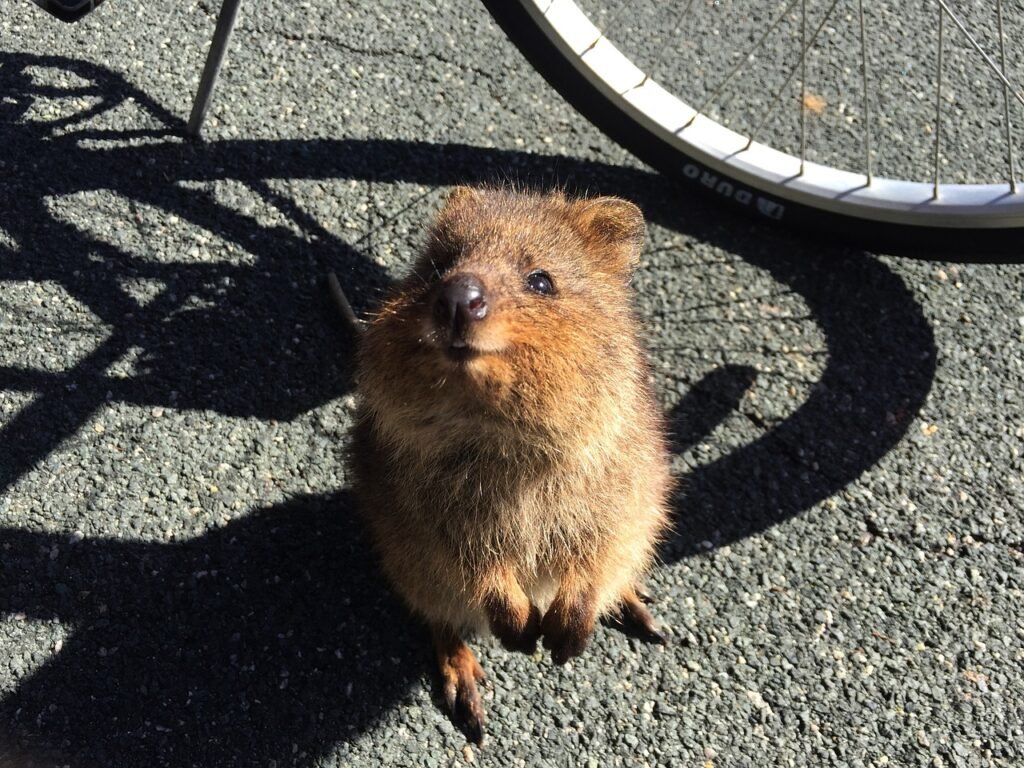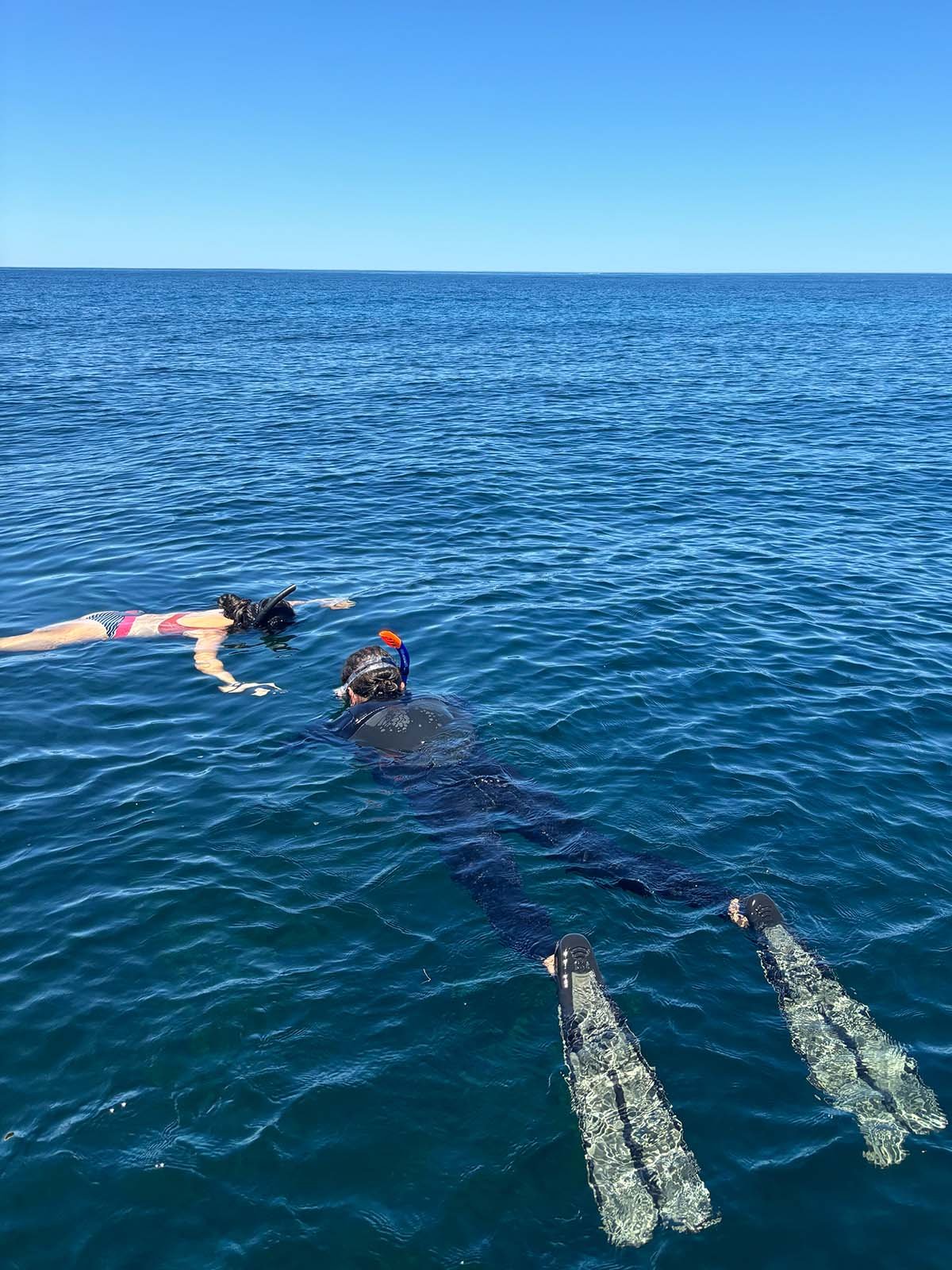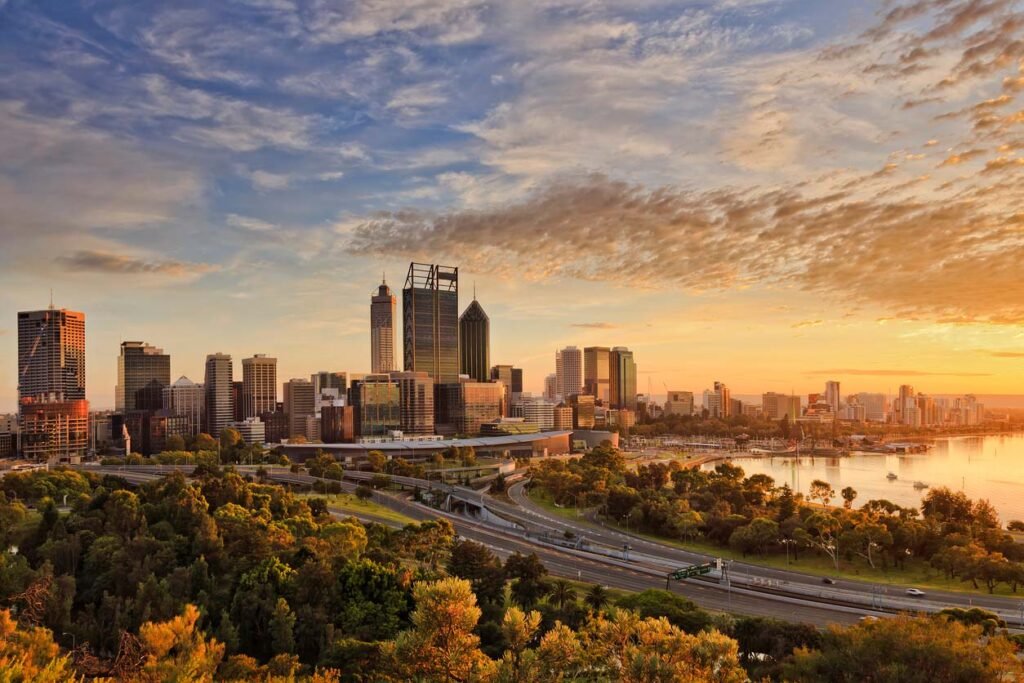Give me a loop, pair of goggles and fins, and a ferry ticket to Rottnest—and I’ll be a happy man. Because I know I’ll be catching crayfish by the (legal) bagful. You might know them as rock lobsters and consider them to be premium seafood, and the good news is you can catch plenty of crayfish on Rottnest Island.
But most visitors would never know where to find them.

With a little effort, patience and know-how, the outdoor barbecue at your Rotto chalet will be sizzling with delightful white meat in no time. It was on ours.
Can you catch crayfish on Rottnest Island?
Yes, you can. As long as you’re not catching crayfish in the island’s marine reserve (or pilfering them from a cray pot) and you hold a recreational fishing licence, the crays on Rottnest are fair game.
If you have a boat and don’t want to get yourself wet, you can buy cheap plastic craypots for about $50 on Facebook Marketplace. Using a couple of fish heads in the bait trap and some muscle to hurl the pot over the side of your vessel, and you might pull up some nice surprises overnight.
But without a boat—or better, with the thirst of adventure—the prime way to fix yourself a crayfish dinner on Rottnest is to freedive or scuba dive for them.
Remember: You need a recreational fishing licence to catch crayfish on Rottnest. Ensure you’ve paid the very modest fee to the WA Fisheries. And never go over your bag limit. We want to preserve the underwater environment in WA for generations to come. Be wise, not greedy.
Rottnest Island, a mecca for fish (and crayfish)
My wife and I jumped on the ferry to Rottnest early on a February morning, meeting our mates and their son in Geordie Bay after they’d fashionably arrived on their twenty-four-foot fishing boat. I lugged over my freediving gear and loop, and the expectation was high that we’d be finding enough crayfish to feed our families.

With the abundance of marine life around its modest perimeter, Rottnest Island is well known for its exceptional fishing. In peak months, nearly every bay witnesses punters casting a line out and nearly every decent fishing hole is dotted with fishing boats, all trying to feed their kin with fresh seafood.
The small polystyrene buoys dotted on the outskirts of many popular bays give a clear signal that it’s not just fish on offer in these parts, but crayfish too, as these bobbing buoys connect long ropes to algae-covered crayfish pots.
A delicacy in most countries, crays are a dime a dozen along WA’s long coast. But it’s catching them that causes most amateurs to balk. Firstly, because of the crustaceans’ aptitude to evade a steel loop. And secondly, because they can be very difficult and arduous to find.
Not anymore. While we’re not in the habit of handing out local secrets, we want to empower you explorers to catch your own crayfish, instead of forking out $50 per tail at your local seafood restaurant.
Here’s where to catch crayfish on Rottnest Island (without needing a boat or cray pot):
1. Geordie Bay
Lined with self-contained units facing a beautiful horseshoe bay, Geordie Bay is far from some secretive coastal home of exotic shellfish that most may otherwise expect to be my number one suggestion.
Whether entering the water on the eastern- or westernmost side of this tranquil bay, you won’t be disappointed once you duck under a few ledges to check for long antennae. Mike and I began hearing the crackle of crayfish nippers about 30 metres from shore. I was knee deep in water when I held my breath to check a ledge and discovered a wily (and albeit undersized) cray, continuing into deeper waters to find a plethora of them.

The eastern side will take you through some epic swimthroughs and before you know it you’ll have your choice of inlets to kick your fins through and hopefully bag your dinner.
The western side takes you towards secluded Little Parakeet Bay. So much unreal waterlife exists on this side of Geordie Bay that you may forget the original purpose of your mission. I did, when I saw a massive Wobbegong chilling out in one of the many caves.
Bright coloured fish line the beautiful coral and the countless calm inlets emit a sort of spiritual aura as you swim alone in their windless pools, watching the seaweed sway slowly in the undercurrent. You can get about 3m-4m deep here, but we bagged many in 1.5m of water.
2. Stark Bay

Heading further east on Rottnest Island, you’ll find Stark Bay, which is far larger and more open than Geordie. It’s sheltered from the typical southerly breeze but if you venture far enough to the reef (that often challenges newbie skippers when navigating into Stark Bay) you might cop a decent wash if a westerly kicks in.
Along the shore, there are countless ledges, small caves and rocks to check for crays. If you’re cycling here, there are a number of spots to park up your bike, but look for the edges of the bay to find the ideal entry point. Once on shore, you can explore within 50m of the sand to catch a crayfish, or brave the long swim to the outer reef and hope you’re rewarded with a few goodies where far less fishers are willing to explore.
3. Parker Point
Parker Point is one of Rottnest’s most jawdropping snorkelling spots, with a large designated area cordoned off for that precise activity. Many skippers know that it’s a brutal entrance into the bay (just line up the massive red triangles on shore and you’ll be fine, folks) thanks to the natural barrier that prevents easy access. And it’s that long strip of reef you’ll almost certainly find your crayfish dinner.
Park up on shore (or jump off your boat) and begin the venture into deeper waters. As soon as the bright white sand gives way to seaweed, you’ll know you’re close. Be extremely careful navigating the coral (not for your sake, but for the coral’s) and simply enjoy the underwater playground.
There are swimthroughs, deep sandy pits, caves and thousands of ledges. Far from lonely out there, you’ll be joined by thousands of diverse sealife, from tropical fish to starfish… to crayfish.
You’ll want your dive torch here as most ledges are extremely deep. If your buddy is watching you, all the better. Mike all but disappeared into the abyss trying to grab us a cray at Parker Point, and I claim we would’ve lost more than the cray if I hadn’t have pulled him backwards by the tip of his fin.
If not for the crays, go for some of Rottnest’s finest freediving. You won’t regret stopping in at Parker Point.
4. Salmon Bay
Not far from Parker Point is Salmon Bay, a huge stretch of island coast that even has its own “offspring”—the neighbouring Little Salmon Bay—to denote its size.

We were lucky enough to use Mike’s boat to start our mission for Rotto crays, finding a deep spot with a tonne of bombies nearby the boat. I’ll admit, my fear of sharks stepped in here, knowing there are plenty more than just harmless Wobbegongs that frequent the area. The Leeuwin Current has a huge effect on Rottnest Island, bringing with it a plethora of biodiversity—sharks included. So, my bag was empty on return to the boat. Mike is a numbers man and deduces his chance of being eaten is miniscule, so set about catching that night’s dinner by himself—and didn’t disappoint any of us.
5. Thompson’s Bay
The most popular bay on Rottnest Island. Yes, you’ll find crayfish at the General Store. But that’s not the reason it makes my top five spots to catch crayfish on Rotto.

After hopping off the ferry, look north (or merely right as you exit the ferry jetty) to the lighthouse. The foot of the magnificent cliff face that the lighthouse stands on is littered with crayfish. It’s a beautiful area for a mere swim or snorkel, so if you’re with the family, you won’t be the only one enjoying the area when you get in the water. Honestly, you won’t need to hold your breath for long to find a decent ledge that’s likely populated with crays.
The best part? Once you return to shore, you’re likely a five-minute stroll from your accommodation; that’s a shorter walk than to the shops, where the crays are probably sold for as much as a night’s accommodation.
What gear you’ll need to catch crayfish on Rottnest
- Freediving fins
- Goggles and snorkel
- Wetsuit (Regardless of the season, you’ll be in the water for a long time)
- Hood
- Gloves
- Loop
- Dive torch (Use masking tape to stick to the front of your loop)
- Cray bag
- Crayfish/Rock Lobster Gauge (Don’t have one? Don’t go crayfishing.)
Be respectful of the island’s indigenous history
It’s not my place to divulge the long, ancient history of Rottnest Island (Wadgemup) in this post. But I feel that it is to suggest that you please be aware of its spiritual and cultural significance to the Whadjuk people.
The island was once connected to the WA mainland, about 6,500 years ago, which is when it was heavily populated by the original owners of the land (not to mention for the 55,000-odd years beforehand). Of course, the darker history commences with the arrival of the Europeans, whereafter the island was used for imprisoning indigenous in inhumane conditions.
You’ll find plenty of information on the history of Rottnest Island online (and not enough on the actual island, in my opinion), and it’s those sources I’d urge you to even briefly digest before you enter its stunning waters. Give a little thanks for the boundless beauty and magnificent underwater life at Wadgemup.
And of course, be mindful of your catch and keep sustainability firmly in mind when you hunt for your crayfish on Rottnest Island.



